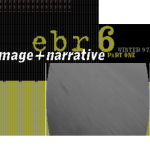electropoetics
Off Center Episode 9: Hypertext as Technology and Literature with Robert Arellano

Hypertext pioneer Robert Arellano discusses the genre with Scott Rettberg, Director of the Center for Digital Narrative (CDN).
Off Center Episode 6: Gendered AI and Editorial Labour in Digital Culture with Lai-Tze Fan

Scott Rettberg, director of the Center for Digital Narrative (CDN) is joined by Lai-Tze Fan to discuss gendered AI assistants and the invisible labor involved in editorial work.
Off Center Episode 5: AI, Computational Creativity, and Media Production with Drew Keller

Drew Keller, Microsoft employee and graduate of the Digital Culture program at the University of Bergen joins Scott Rettberg to talk about the potential role of AI in our media production. From the Jacquard loom to the PowerPoint designer, human creativity has always been intertwined with technology, but is the rapid increase in AI a revolution in the way we produce media, or just another tool?
Memorial for Marjorie C. Luesebrink

EBR would like to express thanks to Dene Grigar and Deena Larsen at Washington State University Vancouver, for organizing and hosting a memoriam for Marjorie C. Luesebrink and for letting us share the memoriam in our journal.
ebr historical intertext

Returning to past formats in the electronic book review such as 'designwriting from the mid-1990s,' ebr co-editor Lai-Tze Fan alerts readers to a feature that is as much a part of our journal's publication, and positioning, as the essays themselves. As annotations in the margins of print texts allow readers to reference earlier texts, a more interactive, intertextual and perhaps more accessible conversation is made available within and among digital texts.